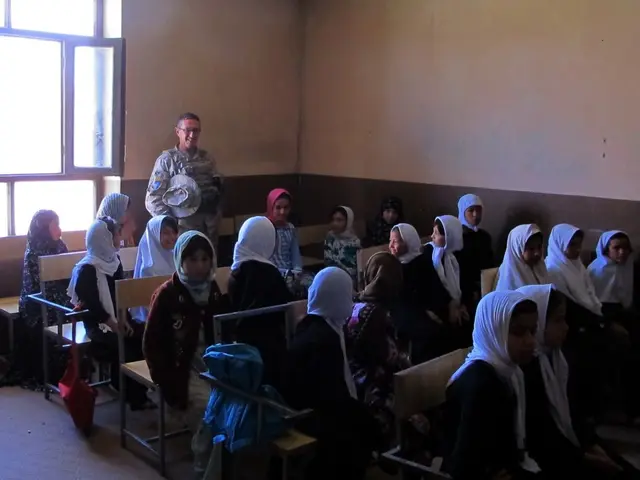"Ten Complimentary Decision Tools for Enhanced Choices!"
Decision-making can often be a challenging process, especially when faced with numerous options or complex scenarios. However, there are several effective decision-making techniques and tools available that can help streamline the process, reduce bias, and improve outcomes. In this article, we will explore some of the most popular and simple decision-making techniques, as well as the accompanying templates that can assist in making better decisions.
One such technique is the Thinking Hats method, where participants adopt different "hats," each representing a distinct way of thinking, promoting diverse perspectives in decision-making. Although there is no formal template for this activity, it encourages structured and thoughtful discussion.
Another practical decision-making technique is the Impact Effort Matrix, which prioritizes tasks by evaluating the impact of an action against the effort required. Tasks can be categorized as quick wins, major projects, fill-ins, or time wasters, helping to streamline focus and resources effectively. Various free templates are available for this method, making it easily applicable in both personal and professional contexts.
The Pugh Matrix, also known as a Decision Matrix, is a structured approach to compare multiple options against common criteria using scores and weighted evaluations. It is widely used in business, project management, design, and risk assessment to ensure objective and consistent decisions. Free customizable templates are available for this method, supporting complex evaluations such as financial product research, engineering design decisions, and risk assessments.
When it comes to making life choices, templates can be a valuable asset. For example, the Decision Matrix Spreadsheet provides numerical results to help determine the best decision or course of action. The Priority Matrix helps determine which tasks take priority by using a scoring system that considers the doability and impact of tasks. The Pros and Cons List Template is a decision-making tool that helps determine the best decision between two specific scenarios.
Moreover, the Consideration of Consequences template provides reflection prompts and spaces for writing answers about the positive and negative consequences of a particular action or decision. The Indecision Worksheet is designed to help become unstuck when it comes to decision-making by exploring what's preventing decisions and aligning them with life goals.
Lastly, the Decision Tree Template allows for a full analysis of the consequences and possible outcomes of a decision. The Weighted Decision Matrix eliminates the subjective nature of emotions and provides numerical results to aid in decision-making.
In summary, these decision tools, supported by well-designed templates, provide practical frameworks for making better, more structured decisions in both workplace and personal scenarios. By using these techniques and templates, decision-makers can approach complex decisions with clarity, objectivity, and confidence.
- Implementing the Thinking Hats method, which involves adopting different 'hats' representing distinct ways of thinking, can promote diverse perspectives in 'personal growth' and improve decision outcomes.
- The Impact Effort Matrix, a decision-making technique, categorizes tasks based on their impact and effort required, helping with 'time management' and resource distribution in 'personal development' and professional settings.
- The Decision Matrix Spreadsheet, a decision-making tool, uses numerical results to help determine the best 'education-and-self-development' path or choice, facilitating objective decision-making in complex personal or professional scenarios.




